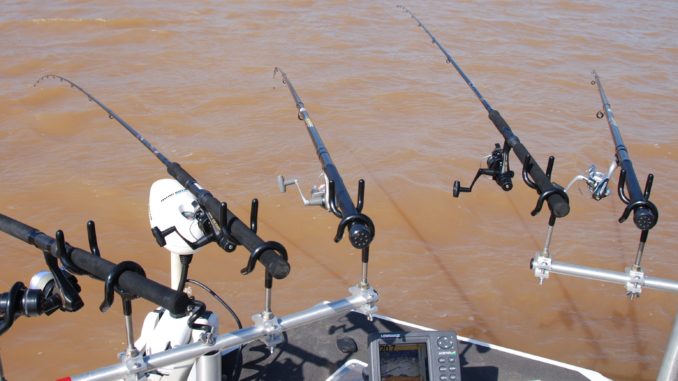
Getting started tight-lining for crappie requires advanced preparation. Admittedly, that also means a moderate investment. The combination of gear and tackle makes a boat uniquely crappie-oriented, although most of the accessories can have multiple species applications.
• Rod Holder System. A multiple rod holder rack or system is typically a “T-bar” set up with up to four rod holders on each “T” or singular holders to separate the rods. It’s important to be able to adjust the holders to spread the rod tips out and allow for slight elevation adjustments in the rods to compensate for fishing heavier weights or rough water.
• Trolling Motor. A variable speed motor is a must. A set-speed trolling motor inevitably will propel the boat either too fast or two slow to fish effectively and will require one angler to constantly be on the trolling motor bumping the boat forward.
• Sonar Unit. Mount the transducer for the bow-mounted sonar unit on the trolling motor. This puts the top of the sonar cone in the center of your spread. Side-imaging sonar is revolutionizing slow trolling, allowing the angler to know what’s ahead and to the sides of the boat, allowing for depth and course adjustments to favorably position baits.
• Long Rods. Many anglers shun longer rods, but when you’re fishing water 10 feet or shallower, the boat can spook fish when you get too close. The minimum recommended length is 12 feet. For shallow water anglers, 14 feet is common and may go as long as 16. Most serious fishermen swear by sensitive-tipped graphite or Kevlar rods with strong backbone to better detect strikes over cheaper fiberglass poles.





Be the first to comment